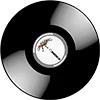
History of Acid House: how the Roland TB-303 changed music and gave birth to rave culture. Artists, facts, and the genre’s influence.
Acid House is one of the most iconic genres of electronic music, emerging in the mid-1980s. It is characterized by hypnotic basslines created on the legendary Roland TB-303 synthesizer, steady beats, and a psychedelic atmosphere. Acid House became a symbol of rave culture and a true musical revolution.
History
-
1985–1987: Acid House originated in Chicago, where DJs experimented with the TB-303, transforming this "bass machine" into an instrument capable of producing acid, resonant sounds.
-
1987–1989: The style spread to the UK, giving rise to the famous Second Summer of Love. Acid House became an anthem of freedom and underground raves.
-
1990s: Acid House influenced the evolution of techno, trance, and many other genres.
Sound Characteristics
-
Tempo: 120–130 BPM
-
TB-303 sound with its distinctive “acidic” filter
-
Steady 4/4 rhythm
-
Minimalism and a hypnotic atmosphere
-
Visual culture: smiley faces, neon lights, psychedelia
Influence
Acid House gave birth to an entire subculture — illegal raves, club parties, and underground festivals. This style changed the face of electronic music forever.
Key Artists
-
Phuture (Acid Tracks)
-
Hardfloor
-
Adonis
-
Josh Wink (Higher State of Consciousness)
Interesting Facts
-
The smiley face became the symbol of Acid House in 1988.
-
The TB-303 was originally a commercial failure as a “bass guitar companion,” but became a legend of the rave scene.
-
In the UK, authorities introduced anti-rave laws due to the rising popularity of Acid House.

